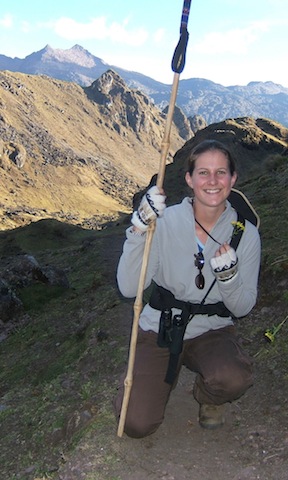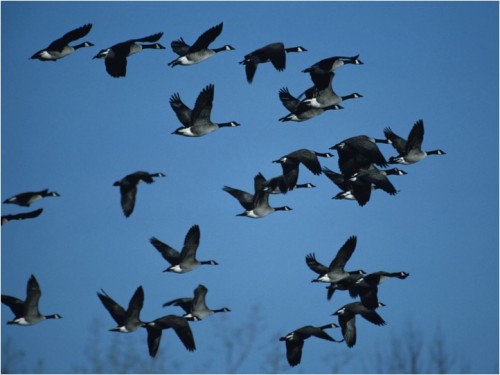
The timing of recurring life cycle events for plants and animals, like flowering and migration, are largely determined by cues organisms take from the climate. Scientists who study phenology, or the timing of these natural events, are interested in how climate change, particularly rising global temperatures and unpredictable transitions between seasons, will influence the timing of phenological events. For example, what can we expect to happen to the migration timing of birds, the mating season for animals, or the flowering times in plants? Further, how might abiotic seasonal changes like melt dates for lakes and rivers respond to climate change? To answer these questions, scientists turn to long-term datasets to examine whether shifts in phenological events are occurring over extended periods of time.
Long-term datasets are extremely useful because scientists can examine average trends in timing shifts over periods of decades and often in different regions. Citizen science has played a major role in curating many of these datasets. Citizen science is essentially research conducted by “crowdsourcing” – individuals collect data and contribute to a large dataset that can then be analyzed to address scientific questions. Phenology data is easy to collect and involves observations that we make every day, but hardly ever record. Technology makes it extremely easy to record, aggregate, and store citizen science data online for future use.
In this lesson we will use a few of these datasets to go through the scientific process of forming and testing hypotheses using real data. Students will be able to examine changes in phenology over 30+ year timespans, and address the scientific question, “Do we see evidence for climate change in the phenology of plants and animals?” We will also discuss how students as a class can start curating their own long-term phenological datasets by observing organisms in your schoolyard or BEST Plots!
At the conclusion of the lesson, students will be able to:
- Define phenology and give examples in plants and animals
- Graph phenology data
- Interpret results from a graph
- Make claims about organismal responses to climate change
- Identify locations where they can submit citizen science data they collect
Resources:
Lesson plan written and created by GK-12 Fellows Liz Schultheis and Dustin Kincaid, 2012
 This lesson takes a look at some of the ways that climate change may directly affect the life of a Michigander. It includes several opportunities for discussion about student’s observations and their connection to data. Using an internet-based weather forecasting tool for Michigan, students will complete an activity that allows them to visualize how several climatic changes will affect their lives.
This lesson takes a look at some of the ways that climate change may directly affect the life of a Michigander. It includes several opportunities for discussion about student’s observations and their connection to data. Using an internet-based weather forecasting tool for Michigan, students will complete an activity that allows them to visualize how several climatic changes will affect their lives.

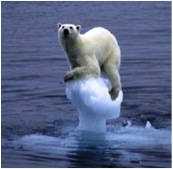
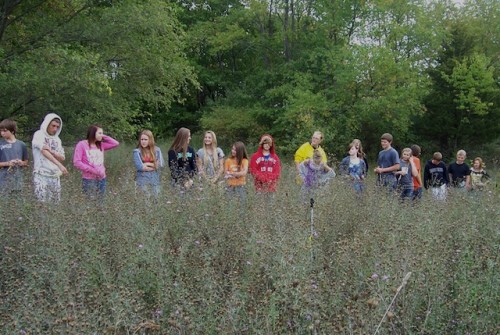



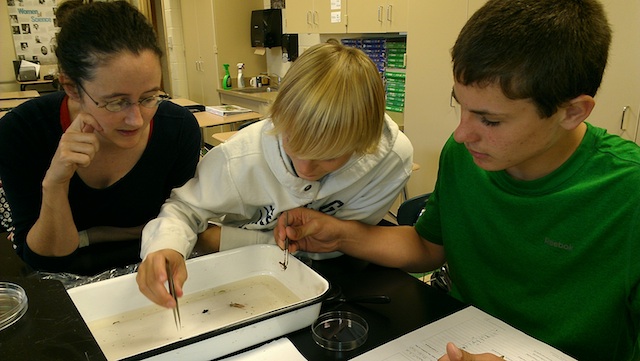
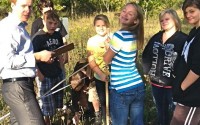
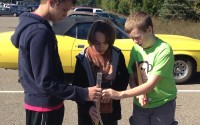 The eighth graders in Mr. Stolberg’s Earth Science class at OlivetMiddle School wereabletospend some well-deserved time outside as they were introducedto the BEST plots. To gain a better understanding of how the surrounding lands can influence the plots the students ran the small-scale landscape protocol. Students wereseparated into two groups, Team Landscape and Team Elevation. Team Landscape identified how the land was being used for the fifty meters surrounding each side of the plots. Team Elevation got to learn how touse a water level, and also determine the slope of theland surrounding the plots. Through the hard work of all the 8th graders, we were able to determine that the land surrounding the plot is primarily unmanaged, naturally occurring field, except for the parkinglot that is twenty meters to the south of the plots. Also, both plots are situated on relatively level land. As the students pointed out, the benefit of level land is it will help minimize the influence from the surrounding land, such as the parking lot, on the plots.
The eighth graders in Mr. Stolberg’s Earth Science class at OlivetMiddle School wereabletospend some well-deserved time outside as they were introducedto the BEST plots. To gain a better understanding of how the surrounding lands can influence the plots the students ran the small-scale landscape protocol. Students wereseparated into two groups, Team Landscape and Team Elevation. Team Landscape identified how the land was being used for the fifty meters surrounding each side of the plots. Team Elevation got to learn how touse a water level, and also determine the slope of theland surrounding the plots. Through the hard work of all the 8th graders, we were able to determine that the land surrounding the plot is primarily unmanaged, naturally occurring field, except for the parkinglot that is twenty meters to the south of the plots. Also, both plots are situated on relatively level land. As the students pointed out, the benefit of level land is it will help minimize the influence from the surrounding land, such as the parking lot, on the plots.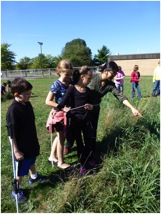
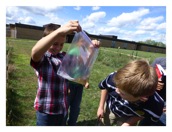 We plan to continue to spending time outdoors as much as we can at the BEST plots and collect data on plant diversity and productivity as well as soil texture and chemistry. I look forward to working with the energetic and enthusiastic middle school students at Gull Lake middle school!
We plan to continue to spending time outdoors as much as we can at the BEST plots and collect data on plant diversity and productivity as well as soil texture and chemistry. I look forward to working with the energetic and enthusiastic middle school students at Gull Lake middle school!
